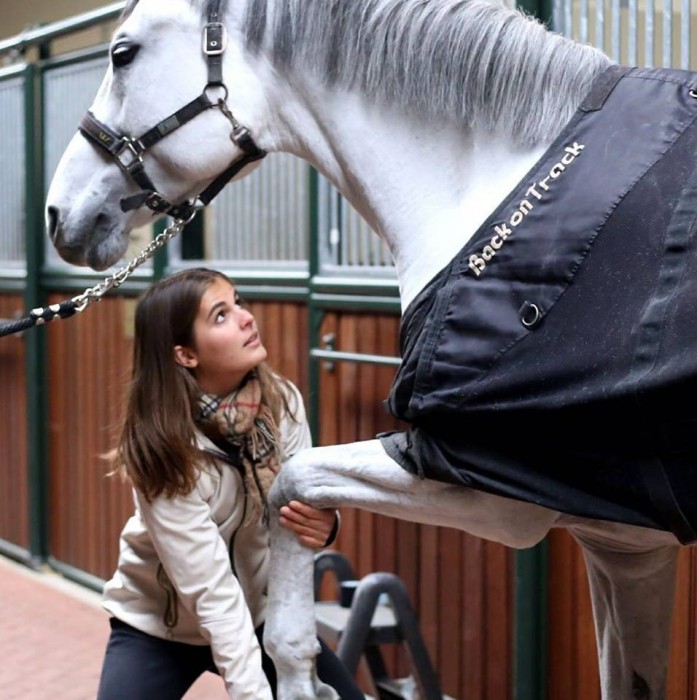
Joint mobilisations and manipulations for the equine athlete
Mobilisations are defined as repetitive joint movements in the passive range of movement (ROM), caused by a non-impulsive force. The main difference with manipulations in execution is the presence of a high-speed thrust: a fast impulse to move a joint or vertebral segment beyond this passive ROM, without exceeding the anatomic limit. Manipulations cannot be used when there is inflammation or an acute soft tissue injury present.
They both have an effect on physiological and psychological level and may help manage pain and neuromotor deficits.
These manual techniques are used when there is a musculoskeletal dysfunction present that is localised at the articular structures. Often, the cause of these dysfunctions is an altered movement pattern as a response to pain. Antalgic patterns can lead to a higher likeliness of injury of surrounding joints and muscles.
Manual techniques are often used to treat localised musculoskeletal pain, muscle hypertonicity and restricted joint movement. All three of these are often present in horses with back or neck problems.
Manipulations can help correct altered movement patterns, as well as induce reflex inhibition of pain and stimulate muscle relaxation. This is how this technique could decrease the chance of injury. The restoration of normal joint motion adds to this potential.
Expert opinion by Charlotte De Bruyne
Mobilisations are easier to use than manipulations: fewer skills are needed, they have minimal risks and can be used in acute stages of injuries, which is not the case with manipulations. However, in more chronic cases, manipulations will prove more effective. Due to the lack of research in the equine field, most of the information in this article is translated from human research. This does not make it inapplicable, but certain psychological factors present in humans may not be present in horses, and so it is not a given that all manual techniques are as effective in horses as they are in humans.
> From: Haussler, Vet Clin Equine 32 (2016) 87-101. All rights reserved to Elsevier Inc.. Click here for the online summary.


